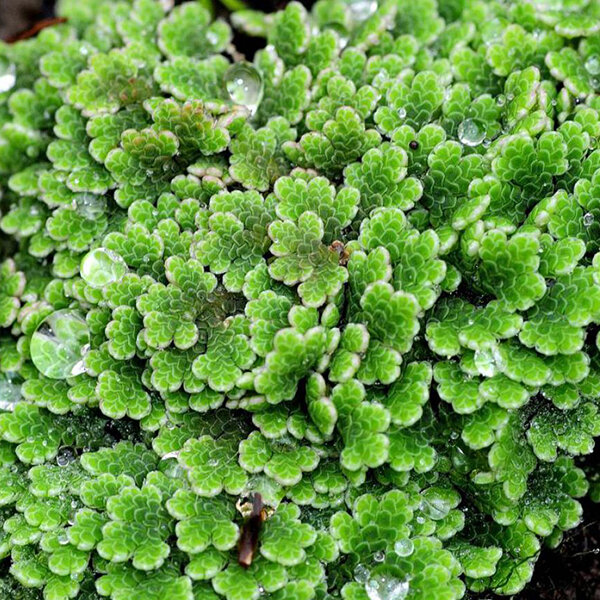Water Fern
Azolla filiculoides
The plant is actually a free-floating aquatic fern which strongly resembles duckweed both in habit and habitat. It has rows of tiny imbricate (overlapping) leaves along short branching stems, the alternating leaf arrangement gives the plant a plaited appearance. The leaves are bi-lobed, densely hairy, and are mainly green in colour but can be tinged pink, orange or red at the edges. Each individual plant is c. 1-2cm across.
The fronds turn red in late summer or when stressed. It can form dense mats (up to 30cm thick has been recorded!) and easily out-competes native species. The dense mats also block out light and deoxygenate the water creating an anaerobic environment and preventing photosynthesis of aquatic plants. It mainly spreads vegetatively and it only takes a very small section of the plant to form a new colony. It can also produce spores.
Water fern is found in ditches and ponds, and other slow moving water. It is an invasive, non-native species and was introduced from the Americas for ornamental use in ponds and aquaria. It has spread rapidly throughout England and Wales in the last 50 years, and was banned from sale in April 2014.
Where and when to see them
Found in ditches and ponds, and other slow moving water.
Keep an eye out in the spring and summer months. It is particularly easy to spot in late summer and early autumn as the fronds turn red.
View a water fern 10km distribution map of Wales.
Legal status
The species is listed on Schedule 9 of the Wildlife & Countryside Act, it is therefore an offence to plant or otherwise cause to grow these plants in the wild.
Similar Species
Duckweeds
These are also tiny floating plants that can form green carpets across the surface of fresh water bodies.
Common duckweed (Lemna minor)
These small plants have a single frond measuring 1-3mm with 3-5 veins. The frond is flat on both sides, and has a single very long root hanging down into the water.
Greater duckweed (Spirodela (Lemna) polyrhiza)
The single fronds measure 3-10mm with 5-15 veins, and have 5-15 roots hanging down into the water.
Rootless duckweed (Wolffia arrhiza)
This is the smallest flowering plant in the world with fronds measuring only 0.5-1.5mm. The plants are swollen on both upper and lower surfaces and are like tiny ovoid grains (they can be rolled in your fingers).
Fat duckweed (Lemna gibba)
Plants measure 3-5mm long, and are green and convex with 4-5 veins. They have strongly swollen undersides with 1 root. Air spaces can be seen on the upper side when viewed with a hand lens and held up to the light.
Did you know?
With its dense covering of hairs, a coating of waxy particles and leaf air bladders, this plant is unsinkable. If you poke it under the water, it will bob back up again!

